The prefix super in the moniker supercomputer may, to the ill-informed, conjure up images of the electronic supervillain HAL 9000 in Arthur C. Clarke's classic movie 2001: A Space Odyssey or the benevolent superhero Clark Kent, aka Superman, who inhabits the DC comic universe. However, the tag supercomputer is, in fact, associated with a non-fictional entity that has no ill-will towards humans - at least not at this moment in time. Supercomputing and supercomputers are the subject matter of this book.
In this chapter, we introduce the reader to the basics of supercomputing, or more precisely, parallel processing. Parallel processing is a computational technique that is currently enjoying widespread usage at many research institutions, including universities and government laboratories, where machines routinely carry out computation in the teraflops (1 billion floating point operations per second) and petaflops (1,000 teraflops) domain. Parallel processing significantly reduces the time needed to analyze and/or solve complex and difficult mathematical and scientific problems, such as weather prediction, where a daunting myriad of physical atmospheric conditions must be considered and processed simultaneously in order to obtain generally accurate weather forecasting.
Supercomputing is also employed in analyzing the extreme physical conditions extant at the origin of the much-discussed Big Bang event, in studying the dynamics of galaxy formation, and in simulating and analyzing the complex physics of atomic and thermonuclear explosions - data that is crucial to the military for maintaining and designing even more powerful weapons of mass destruction - holy crap!! This doesn't bode well for humanity. Anyway, these are just a few examples of tasks germane to parallel processing. Following are images of events that are being studied/simulated by scientist employing supercomputers:

The enhanced processing speed, so central to parallel computing, is achieved by assigning chunks of data to different processors in a computer network, where the processors then concurrently execute similar, specifically designed code logic on their share of the data. The partial solution from each processor is then gathered to produce a final result. You will indeed be exploring this technique later when you run example codes on your PC, and then on your Pi2 or Pi3 supercomputer.
The computational time compression associated with parallel computing is typically on the order of a few minutes or hours, rather than weeks, months, or years. The sharing of tasks among processors is facilitated by a communication protocol for programming parallel computers called Message Passing Interface (MPI). The MPI standard, which came to fruition between the 1980s and early 1990s, was finally ratified in 2012 by the MPI Forum, which has over 40 participating organizations.
You can visit https://computing.llnl.gov/tutorials/mpi/ for a brief history and tutorial on MPI, and https://computing.llnl.gov/tutorials/parallel_comp/ for parallel computing. You can also visit http://mpitutorial.com/tutorials/ for additional information and a tutorial on MPI programming.
In this chapter, you will learn about the following topics:
John von Neumann's stored-program computer architecture
Flynn's classical taxonomy
Historical perspective on supercomputing and supercomputers
Serial processing techniques
Parallel processing techniques
The need for greater processing speed
Additional analytical perspective on the need for greater processing speed
Dr. John von Neumann:

John von Neumann circa the 1940s
Any discussion concerning computers must include the contributions of the famed Hungarian mathematician/genius Dr. John von Neumann. He was the first to stipulate, in his famous 1945 paper, the general requirements for an electronic computer. This device was called a stored-program computer, since the data and program instructions are kept in electronic memory. The specification was a departure from earlier designs where computers were programmed via hard wiring. Von Neumann's basic design has endured to this day, as practically all modern-day processors exhibit some vestiges of this design architecture (see the following figure):

Von Neumann architecture
Von Neumann's design basic components are tabulated as follows:
The four main elements:
A memory component
A controller unit
A logic unit for doing arithmetic
An input and output port
A means for storing data and program instructions termed read/write random access memory
The data is information utilized by the program
The program instructions consist of coded data that guides the computer to complete a task
Controller Unit acquires information from memory, deciphers the information, and then sequentially synchronizes processes to achieve the programmed task
Basic arithmetic operations occur in the Arithmetic Logic Unit
Input and Output ports allow access to the Central Processing Unit (CPU) by a human operator
Additional information can be obtained at https://en.wikipedia.org/wiki/John_von_Neumann
So, how does this architecture relates to parallel processors/supercomputers? You might ask. Well, supercomputers consist of nodes, which are, in fact, individual computers. These computers contain processors with the same architectural elements described previously.
Parallel computers can be classified in at least four ways:
Single Instruction stream Single Data stream (SISD)
Single Instruction stream Multiple Data stream (SIMD)
Multiple Instruction stream Single Data stream (MISD)
Multiple Instruction stream Multiple Data stream (MIMD)
These classifications are discussed in more detail in the Appendix:

Michael J. Flynn proposed this classification in 1966, and it is still in use today. The Cray-1 and the CDC 7600 supercomputer discussed in the following sections are of the SISD class. Use the following link to learn more about Flynn: https://en.wikipedia.org/wiki/Flynn's_taxonomy.
The descriptor super computing first appeared in the publication New York World in 1929. The term was in reference to the large, custom-built IBM tabulator installed at Columbia University. The IBM tabulator is depicted following:
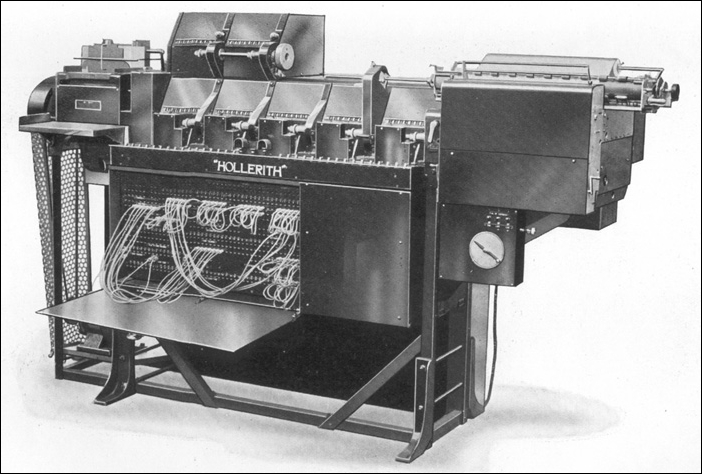
IBM Tabulators and Accounting Machine
The burgeoning supercomputing field was later buttressed with contributions from the famed Seymour Cray, with his brainchild, the CDC6600, that appeared in 1964. The machine, for all intents and purposes, was the first supercomputer. Cray was an applied mathematician, computer scientist, and electrical engineer. He subsequently built many faster machines. He passed away on October 5, 1996 (age 71) but his legacy lives on today in several powerful supercomputers bearing his name.
The quest for the exaflop machine (a billion, billion calculations per second) commenced when computer engineers in the 1980s gave birth to a slew of supercomputers that only had a few processors. In the 1990s, machines that had thousands of processors began appearing in the United States and Japan. These machines achieved new teraflop (1,000 billion calculations per second) processing performance records, but this achievement was only fleeting, as the end of the 20th century ushered in petaflop (1,000,000 billion calculations per second) machines that had large-scale parallel architecture. These machines comprise thousands (over 60,000, to give an estimate) of off-the-shelf processors similar to those used in personal computers. Indeed, progress in performance is relentless, and inexorable - maybe? I guess only time will tell. An image of an early trailblazing supercomputer, the Cray-1, is depicted in the following figure:
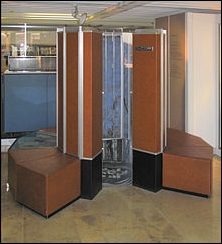
A Cray-1 supercomputer preserved at the Deutsches Museum
The relentless drive for ever-greater computing power began in earnest in 1957 when a splinter group of engineers left the Sperry Corporation to launched the Minneapolis, MN based Control Data Corporation (CDC). In the subsequent year, the venerable Seymour Cray also left Sperry. He teamed up with the Sperry splinter group at CDC, and in 1960 the 48-bit CDC1604 - the first solid state computer - was presented to the world. It operated at 100,000 operations per second. It was a computational beast at the time, and certainly a unicorn in a world dominated by vacuum tubes.
Cray's CDC1604 was designed to be the apex machine of that era. However, after an additional 4 years of experimentation with colleagues Jim Thornton, Dean Roush, and 30 other Cray engineers, the 60-bit CDC6600 was born. The machine debuted in 1964. The development of the CDC 6600 was made possible when the company Fairchild Semiconductor delivered to Cray and his team the much faster compact germanium transistors, which were used in lieu of the slower silicon-based transistors. These faster, compact, germanium transistors, however, had a drawback, namely excessive heat generation. This problem was mitigated with refrigeration, an innovation pioneered by Dean Roush. Because the machine outperformed its contemporaries by a factor of 10, it was dubbed a supercomputer, and after selling 100 computers, each costing a stratospheric $8 million, the moniker has now become permanently etched in our collective consciousness for decades hence.
The 6600 achieved speed acceleration by outsourcing mundane work to associated computing peripherals, thus freeing up the CPU for actual data processing. The machine used the Minnesota FORTRAN compiler designed by Liddiard and Mundstock (both men were affiliated with the University of Minnesota). The compiler allowed the processor to operate at a sustained 500 kiloflops, or 0.5 megaflops, on sustained mathematical operations. The subsequent CDC7600 machine regained the mantle as the world's apex machine in 1968; it ran at 36.4 MHz (approximately 3.5 times faster than the 6600). The speed gain was achieved by using other technical innovations. Only 50 of the 7,600 machines were sold. The 7600 is depicted following:
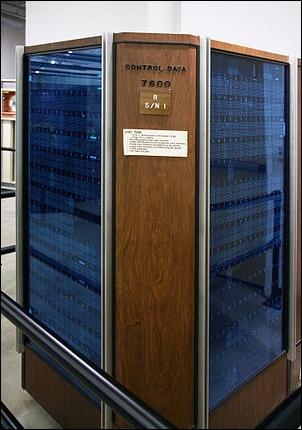
CDC7600 serial number 1 (this figure shows two sides of the C-shaped chassis)
In 1972, Cray separated from CDC to embark on a new venture. However, two years after his departure from the company, CDC introduced the STAR-100, a computational behemoth at the time, capable of executing 100 megaflops of processing power. The Texas Instruments ASC machine was also a member of this computer family. These machines ushered in what's now known as vector processing, an idea inspired by the APL programming language of the 1960s.
In 1956, researchers at Manchester University in Great Britain began experimenting with MUSE, which was derived from microsecond engine. The goal was to design a computer that could achieve processing speeds in the realm of microsecond per instruction, approximately 1 million instructions per second. At the tail end of 1958, the British electrical engineering company Ferranti collaborated with Manchester University on the MUSE project that ultimately resulted in a computer named Atlas; see the following figure:
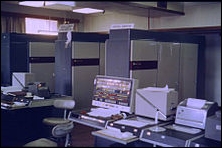
The University of Manchester Atlas in January 1963
Atlas was commissioned on December 7, 1962, approximately three years before the CDC 6600 made its appearance as the world's first supercomputer. At that time, the Atlas was the most powerful computer in England and, some might argue, the world, having a processing capacity of four IBM 7094s, about 2 MHz. Indeed, a common refrain then was that half of Britain's computing capacity would have been lost had Atlas gone offline at any time.
Additionally, Atlas ushered in the use of virtual memory and paging - technologies used to extend its memory. The Atlas technology also gave birth to the Atlas Supervisor, which was the Windows or MAC OS of the day.
The mid-1970s and 1980s are considered the Cray era. In 1976, Cray introduced the 80 MHz Cray-1. The machine affirmatively established itself as the most successful supercomputer in history. Cray engineers incorporated integrated circuits (with two gates per chip) into the computer architecture. The chips were also capable of vector processing, which introduced innovations such as chaining, a process whereby scalar and vector registers produce a short-term result, which is then immediately used, thus obviating additional memory references, which tends to lower processing speeds. In 1982, the 105 MHz Cray X-MP was introduced. The machine boasts a shared-memory parallel vector processor with enhanced chaining support, and multiple memory pipelines. The X-MP's three floating point pipelines execute simultaneously. In 1985, the Cray-2 (see the following figure) was introduced. It had four liquid cooled processors that were fully submerged in Fluorinert, which boiled during normal operation, as heat was removed from the processors via evaporative cooling:
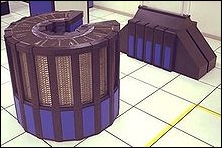
A liquid-cooled Cray-2 Supercomputer
The Cray-2 processors ran at 1.9 gigaflops, but played a subordinate role to the record holder, the Soviet Union's M-13, which operated at 2.4 gigaflops; see the following figure:

M13 Supercomputer, 1984
The M13 was dethroned in 1990 by the 10-gigaflop ETA-10G, courtesy of CDC. See the following figure:

CDC, ETA-10G Supercomputer
The 1990s saw the growth of massively parallel computing. Leading the charge was the Fujitsu Numerical Wind Tunnel supercomputer. The machine had 166 vector processors that propelled it to the apex of computational prowess in 1994. Each of the 166 processors operated at 1.7 gigaflops. However, the Hitachi SR2201, which had a distributed memory parallel system, bested the Fujitsu machine by chiming in at 614 gigaflops in 1996. The SR2201 used 2,048 processors that were linked together by a fast three-dimensional crossbar network.
The Intel Paragon, which was a contemporary of the SR2201, had 4,000 Intel i860 processors in varied configuration, and was considered the premier machine, with lineage dating back to 1993. Additionally, the Paragon used Multiple Instructions Multiple Data (MIMD) architecture, which linked processors together by way of a fast two-dimensional mesh. This configuration allows processes to run on multiple nodes (see the Appendix), using MPI. The Intel Paragon XP-E is shown here:
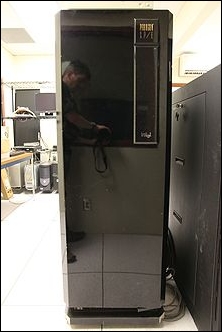
Intel Paragon XP-E single cabinet system Cats
The progeny of the Paragon architecture was the intel ASCI Red supercomputer (see the following figure). Advanced Simulation and Computing Initiative (ASIC). The Red was installed at the Sandia National Laboratories in 1996, to help maintain the United States' nuclear arsenal pursuant to the 1992 memorandum on nuclear testing. The computer occupied the top spot of supercomputing machines through the end of the 20th century. The computer was massively parallel, bristling with over 9,000 computing nodes, and had more than 12 terabytes of data storage. The machine incorporated off-the-shelf Pentium Pro processors that had widely inhabited personal computers of the era. This computer punched through the 1 teraflop benchmark, ultimately reaching the new 2 teraflops benchmark:

ASCI Red supercomputer
Human desire for greater computing power entered the 21st century unabated. Petascale computing has now become the norm. A petaflop is 1 quadrillion floating point operations per second, which is 1,000 teraflops, which is 1,000,000,000,000,000 floating point operations per second, or  flops. What?! Is there an end somewhere to this madness? It should be noted that greater computing capacity usually means greater consumption of energy, which translates to greater stress on the environment. The Cray C90, which debuted in 1991, consumed 500 kilowatts of power. The ASCI Q gobbled down 3,000 kW and was 2,000 times faster than the C90 a 300-fold performance per watt increase. Oh well!
flops. What?! Is there an end somewhere to this madness? It should be noted that greater computing capacity usually means greater consumption of energy, which translates to greater stress on the environment. The Cray C90, which debuted in 1991, consumed 500 kilowatts of power. The ASCI Q gobbled down 3,000 kW and was 2,000 times faster than the C90 a 300-fold performance per watt increase. Oh well!
In 2004, NEC's Earth Simulator supercomputer (see the following figure) achieved 35.9 teraflops, or  flops, that is,
flops, that is,  flops, using 640 nodes:
flops, using 640 nodes:
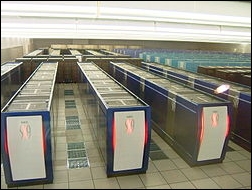
NEC Earth Simulator
IBM's contribution to the teraflop genre was the Blue Gene supercomputer (see the following figure):
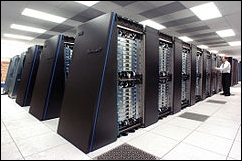
Blue Gene/P supercomputer at Argonne National Laboratory
The Blue Gene supercomputer debuted in 2007, and operated at 478.2 teraflops. Its architecture was widely used in the former part of the 21st century. Blue Gene is, essentially, an IBM project whose mission was to design supercomputers with an operating speed in the realm of petaflops, but consuming relatively low power. At first glance, this might seem an oxymoron, but IBM achieved this by employing large numbers of low-speed processors that can then be air-cooled. This computational beast uses more than 60,000 processors, which are stacked 2,048 processors per rack. The racks are interconnected in a three-dimensional torus lattice. The IBM Roadrunner maxed out at 1.105 petaflops.
China has seen rapid progress in supercomputing technology. In June 2003, China placed 51st on the TOP500 list. This list is a worldwide ranking of the world's 500 fastest supercomputers. In November 2003, China moved up the ranks to 14th place. In June 2004, it moved to fifth place, ultimately attaining first place in 2010 with the Tianhe-1 supercomputer. The machine operated at 2.56 petaflops. Then, in July 2011, the Japanese K computer achieved 10.51 petaflops, thereby attaining the top spot. The machine employed over 60,000 SPARC64 V111fx processors encased in over 600 cabinets. In 2012, the IBM Sequoia came online, operating at 16.32 petaflops. The machine's residence is the Lawrence Livermore National Laboratory, California, USA. In the same year, the Cray Titan clocked in at 17.59 petaflops. This machine resides at the Oak Ridge National Laboratory, Tennessee, USA. Then, in 2013, the Chinese unveiled the NUDT Tianhe-2 supercomputer, which had a clock speed of 33.86 petaflops, and in 2016, the Sunway TaihuLight supercomputer came online in Wuxi, China. This machine now sits atop the heap with a processing speed of 93 petaflops. This latest achievement, however, must be considered fleeting, as historical trends dictate that more powerful machines are waiting in the wings to emerge soon. Case in point, on July 29, 2015, President Obama issued an executive order to build a super machine that will clock in at a whopping 1,000 petaflops, or one exaflop, approximately 30 times faster than Tianhe-2, and approximately 10 times faster than the newly minted Sunway TaihuLight supercomputer. Stay tuned, the race continues. The following figures show the five fastest machines on the planet to date. These images are presented in ascending order of processing speed, starting with the K computer. The following figure depicts the fifth fastest supercomputer, the K computer:
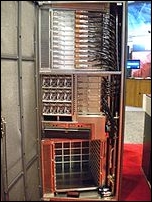
K computer
The following figure depicts the fourth fastest supercomputer, the IBM Sequoia:
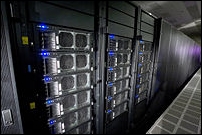
IBM Sequoia
The following figure depicts the third fastest supercomputer, the Cray Titan:
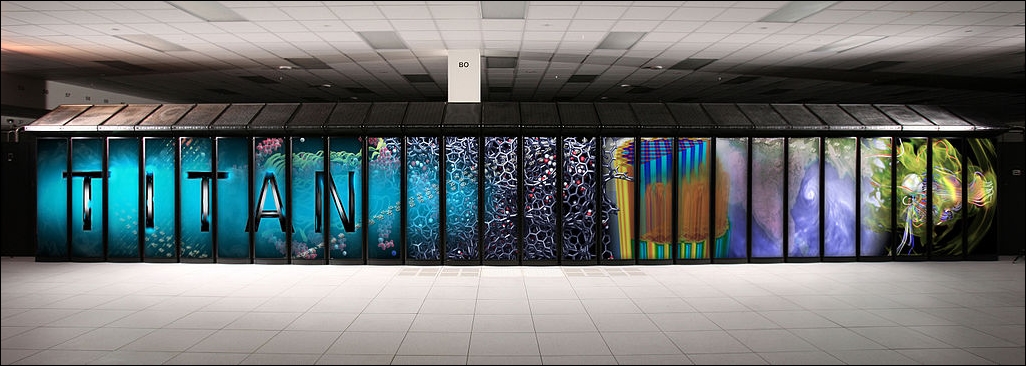
Cray Titan
The following figure depicts the second fastest supercomputer, the Tianhe-2:
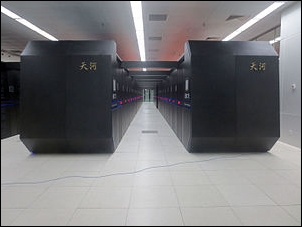
NUDT Tianhe-2
The following figure depicts the fastest supercomputer, the Sunway TaihuLight:
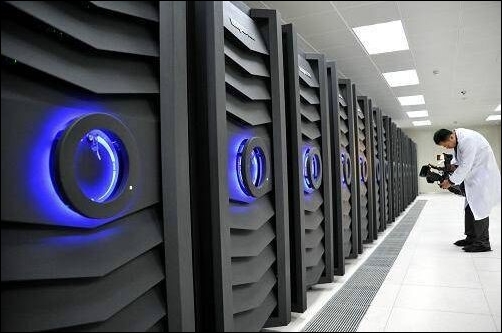
Sunway TaihuLight
Now, you might be asking yourself, so what is the process behind parallel computing? We briefly touched on this topic earlier, but now we will dig a little deeper. Let's examine the following figures, which should help you understand the mechanics behind parallel processing. We begin with the mechanics of serial processing.
The following figure shows a typical/traditional serial processing sequence:

General serial processing
Serial computing traditionally involves the following:
Breaking up the problem into chunks of instructions
Sequentially executing the instructions
Using a single processor to execute the instructions
Executing the instructions one at a time
The following figure shows an actual application of serial computing. In this case, the payroll is being processed:
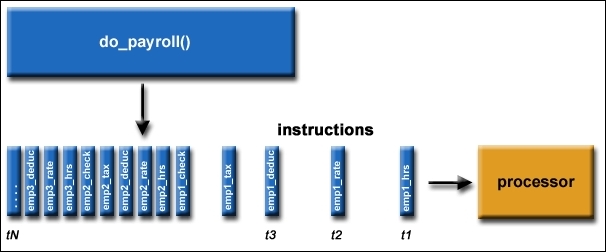
Example of payroll serial processing
The following figure shows a typical sequence in parallel processing, where there is simultaneous use of multiple compute resources employed to solve a given problem:
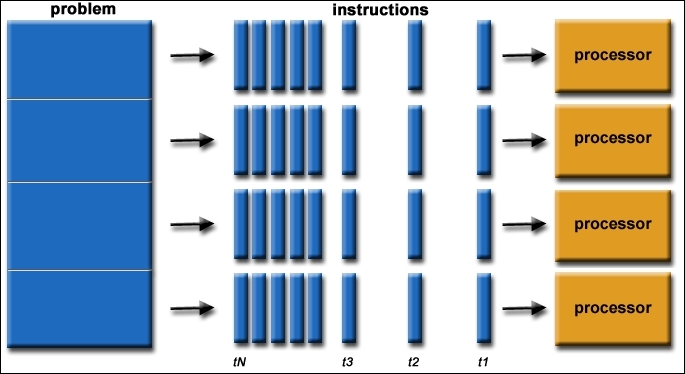
General parallel processing
Parallel computing involves the following:
Breaking up the problem into portions that can be concurrently solved
Breaking down each portion into a sequence of instruction sets
Simultaneously executing each portion's instruction sets on multiple processors
Using an overarching control/coordination scheme
The following figure shows an actual application of parallel computing wherein the payroll is being processed:
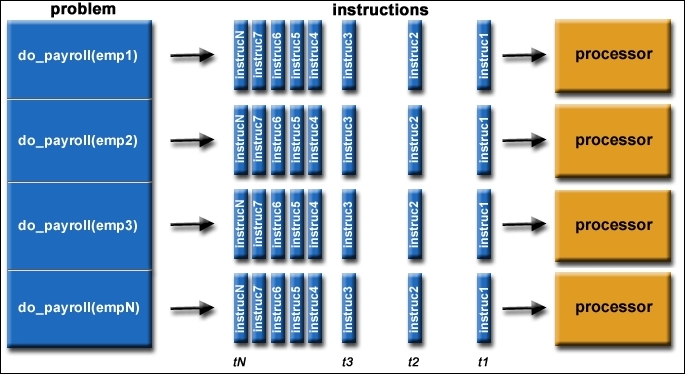
Example payroll parallel processing
One thing to note is that a given computational problem must be able to do the following:
Be broken into smaller discrete chunks to be solved simultaneously
Execute several program instructions at any given moment
Be solved in a smaller time period, employing many compute resources, as compared to using a lone compute resource
Compute resources usually consist of the following:
A sole computer possesses several processors or cores
Any number of computers/processors linked together via a network
Modern computers contain processors with multiple cores (see Appendix), typically four cores (some processors have up to 18 cores, such as the IBM BG/Q Compute Chip), making it possible to run a parallel program using MPI on a single computer/PC or node - if it is part of a supercomputer cluster (see Appendix). This one-node supercomputing capability will be explored later in the book when you are instructed on running a simple parallelized  code. These processor cores also have several functional units, such as L1 cache, L2 cache, prefetch, branch, floating-point, decode, integer, graphics processing (GPU), and so on. The following figure shows a typical supercomputing cluster (see Appendix) network:
code. These processor cores also have several functional units, such as L1 cache, L2 cache, prefetch, branch, floating-point, decode, integer, graphics processing (GPU), and so on. The following figure shows a typical supercomputing cluster (see Appendix) network:
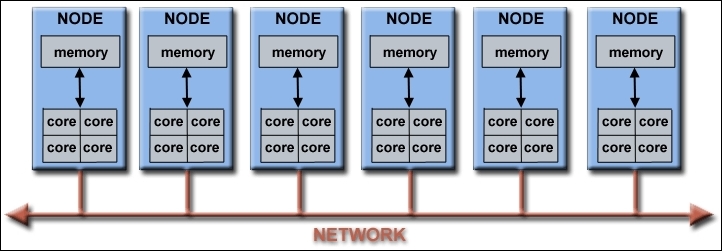
Example of a typical supercomputing network
These clusters can comprise several thousand nodes. The Blue Gene supercomputer discussed earlier has over 60,000 processors. The diminutive Raspberry Pi supercomputer has eight nodes comprising 32 cores (4 cores per Pi), or 16 nodes comprising 64 cores of processing capability. Since each node provides 4 GHz (4.8 GHz for Pi3) of processing power, your machine possesses 32 GHz ( ) or (76.8 GHz for Pi3) of processing capacity. One can argue that this little machine is indeed superior to some supercomputers of yesteryear. At this point, it should be obvious why the technique of parallel processing is superior, in most instances, to serial computing.
) or (76.8 GHz for Pi3) of processing capacity. One can argue that this little machine is indeed superior to some supercomputers of yesteryear. At this point, it should be obvious why the technique of parallel processing is superior, in most instances, to serial computing.
The world/universe is an immensely parallel entity, wherein numerous complex, interconnected events are occurring simultaneously, and within a temporal sequence. Serially analyzing the physics/mechanics of these events would indeed take a very long time. On the other hand, parallel processing is highly suited for modeling and/or simulating these types of phenomena, such as the physics of nuclear weapons testing and galaxy formation mentioned earlier. Depicted here are additional events that lend themselves to parallel processing:


We have already discussed, in general, some of the reasons for employing parallel computing. Now we will discuss the main reasons. Let's start with saving money and time. It is, by and large, a truism that applying more resources to a task tends to accelerate its completion. The technique of parallel processing does indeed buttress this notion by applying multiple nodes/cores to the problem at hand - many hands make light work, to reprise an old adage. Additionally, parallel machines can be constructed from relatively cheap components.
Next up is the issue of needing to solve large, difficult, and complicated problems. Some problems are so enormously complicated and seemingly intractable that it would be foolhardy to attempt a solution with the processing power of a single computer, considering the computer's limited memory capacity. Some of the grand challenges for supercomputing can be found at this link:https://en.wikipedia.org/wiki/Grand_Challenges. These challenges require petaflops and petabytes of storage capacity. Search engines such as Google, Yahoo, and so on employ supercomputers to aid with processing millions of Internet searches and transactions occurring every second.
Concurrency produces greater processing speed. A lone computer processes one task at a time. However, by networking several lone computers, several tasks can be performed simultaneously. An example of this ethos is Collaborative Network, which offers a global virtual space for people to meet and work.
Next, non-local resources can play an important role in parallel processing. For example, when compute resources are inadequate, one can leverage the capacity of a wide area network, or the Internet. Another example of distributive computing is SETI@home, http://setiathome.berkeley.edu/. The network has millions of users worldwide, who provide their computer resources to help in the Search for Extraterrestrial Intelligence (SETI). Incidentally, the author has been a member of SETI for several years running. Whenever he is not using his PC, it automatically lends its processing power to the organization. Another parallel computing organization is Folding@home, http://folding.stanford.edu/. Members provide their PC processor resource to help with finding a cure for Alzheimer's, Huntington's, Parkinson's, and many cancers.
Another, and final, reason for needing parallel computing is to effectively leverage the underlying parallel hardware for improved performance. The current crop of PCs, including laptops, house processors that have multiple cores that are configured in a parallel fashion. Parallel software, such as OpenMPI, is uniquely designed for processors with multiple cores, threads, and so on. You will be using OpenMPI later during the testing and running of your Raspberry Pi supercomputer. Running serial programs on your PC is essentially a waste of its computing capability. The following figure depicts a modern processor architecture by Intel:
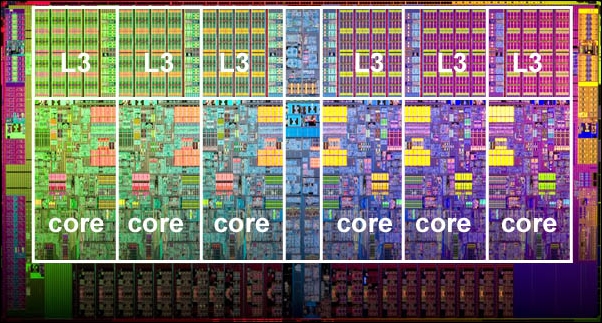
Intel Xenon processor with six cores and six L3 cache units
What does the future hold? You might ask. Well, historical trends dictate that even more powerful supercomputers will emerge in the future - a trend that is guaranteed to continue - as chip-making technology unceasingly improves. In addition, faster network switches are evolving somewhat concurrently with the chips/processors. Switches are used for interconnecting the nodes in the supercomputer. The theoretical upper limit of processing speed on a supercomputer is impacted not only by the communication speed between the cores in the chip, but also by the communication speed between the nodes, and the network switch connecting the nodes. Faster network switching translates to faster processing. Parallelism as a concept is here to stay, and the associated technology is getting better and stronger as we go forward. The following figure depicts the supercomputing performance trend. The race for exaflop computing continues unabated:
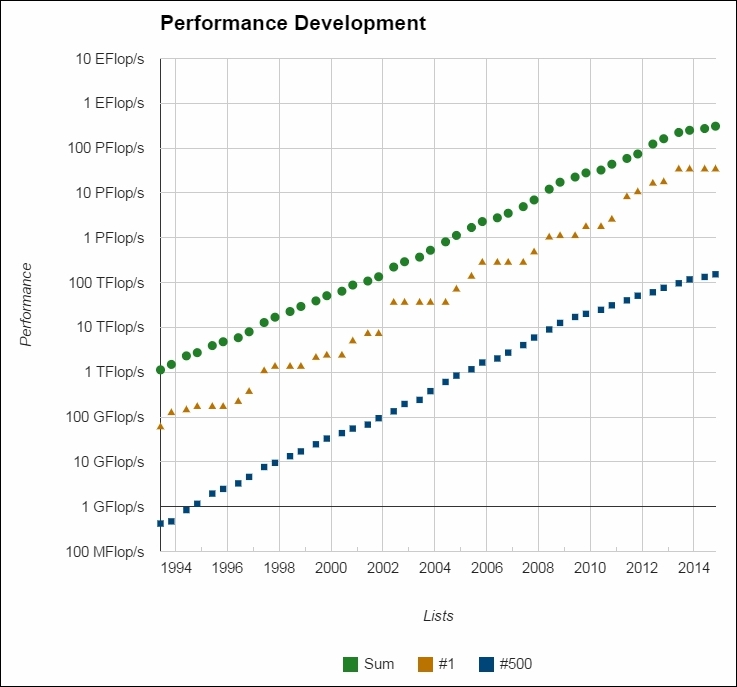
Supercomputing performance trend
The question you might be asking now is, who is using this awesome technology? Well, the short answer is tons of organizations and people. The group that are firmly on this list are scientist and engineers. Among the problem areas being studied/modeled by these eggheads are the following:
Environment, earth, and atmosphere
Applied physics: nuclear, particle, condensed matter, high pressure, fusion, and photonics
Genetics, bioscience, and biotechnology
Molecular science and geology
Mechanical engineering
Microelectronics, circuit design, and electrical engineering
Mathematics and computer science
Weapons and defense
The preceding list represents a few additional example applications of parallel computing. The following figure depicts additional applications of parallel processing in science and engineering:
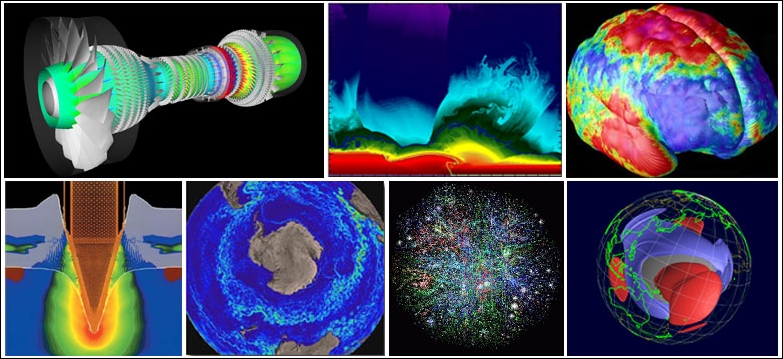
Images of engineering and scientific problems being modeled by supercomputers
The industrial sector is also a big user of supercomputing technology. Companies process huge amounts of data to improve product yield and efficiency. Some examples of this activity are as follows:
Data mining, databases, big data
Oil exploration
Web-based business services and web search engines
Medical diagnosis and medical imaging
Pharmaceutical design
Economic and financial modeling
Management of national and multinational corporations
Advanced graphics and virtual reality
Multimedia technologies and networked video
Collaborative work environments
The following figure depicts a few additional examples of industrial and commercial applications:
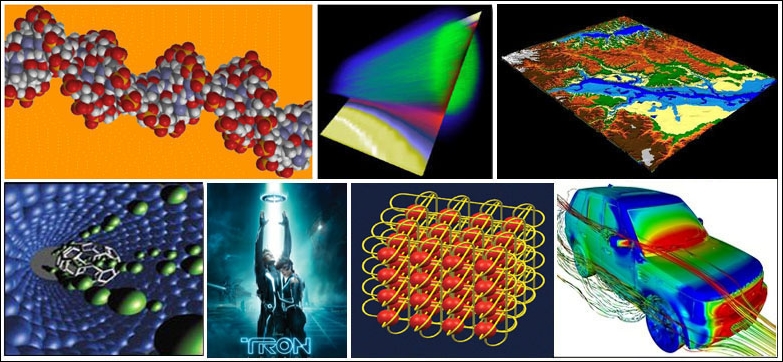
Images of commercial application of supercomputers
Globally, parallel computing is used in a wide variety of sectors; see the following graph:
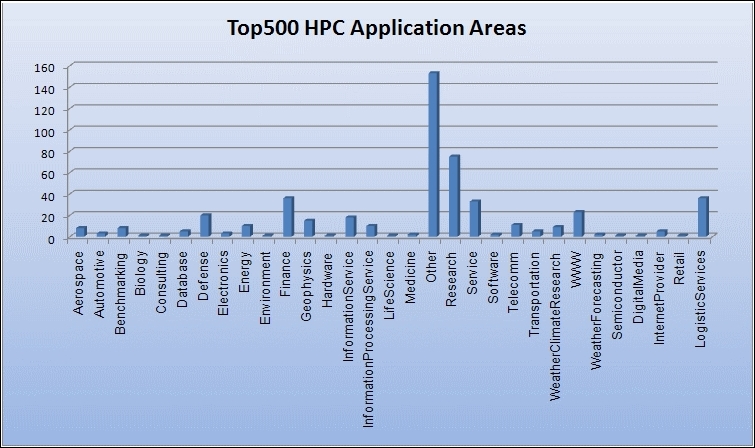
Worldwide use of supercomputing resources
Another perspective on why we need more computing power, goes as follows: let us supposed we want to predict the weather over an area covering the United States, and Canada. We cover the region with a cubical grid that extends 20 km over sea level, and examine the weather at each vertex of the grid. Now, suppose we use a cubic component of the grid that is 0.1 kilometer on the sides, and since the area of the United States, and Canada is approximately 20 million square kilometers. We therefore would need at least
 let us also assume we need a minimum of 100 calculations to ascertain the weather condition at a grid point, then the weather, one hour hence, will require
let us also assume we need a minimum of 100 calculations to ascertain the weather condition at a grid point, then the weather, one hour hence, will require  calculations. Now, to predict the weather hourly for the next 48 hours, we will need
calculations. Now, to predict the weather hourly for the next 48 hours, we will need  . Assuming our serial computer can process
. Assuming our serial computer can process (one billion) calculations per second, it will take approximately
(one billion) calculations per second, it will take approximately  . Clearly, this is not going to work to our benefit if the computer is going to predict the weather at a grid point in 23 days. Now, suppose we can flip a switch that turbocharges our computer to perform
. Clearly, this is not going to work to our benefit if the computer is going to predict the weather at a grid point in 23 days. Now, suppose we can flip a switch that turbocharges our computer to perform  (1 trillion) calculations per second; it would now take approximately half an hour to determine the weather at a grid point, and the weather guy can now make a complete prediction in the next 48 hours.
(1 trillion) calculations per second; it would now take approximately half an hour to determine the weather at a grid point, and the weather guy can now make a complete prediction in the next 48 hours.
Outside of weather prediction, there are numerous other conditions/events occurring in the real world/universe that require a higher rate of calculation. This would require our computer to have a much higher processing speed in order to solve a given problem in a reasonable time. It is this nettling fact that is driving engineers and scientist to pursue higher and higher computational power. This is where parallel computing/supercomputing, with its associated MPI codes, excels. However, obstacles to widespread adaption of parallelism abound, courtesy of the usual suspects: hardware, algorithms, and software.
With regards to hardware, the network intercommunication pathway, aka switches, are falling behind the technology of the modern processor, in terms of communication speed. Slow switches negatively impact the theoretical upper computational speed limit of a supercomputer. You will observe this phenomenon when running your Pi supercomputer, as you bring successive nodes online that transition the input ports on the HP switch. Switch technology is improving, though not fast enough.
Processing speed is dependent on how fast a parallel code executes on the hardware, hence software engineers are designing faster and more efficient parallel algorithms that will boost the speed of supercomputing. Faster algorithms will boost the popularity of parallelism.
Finally, the most impactful obstacle to widespread adoption of parallelism is inadequate software. To date, compilers that can automatically parallelize sequential algorithms are limited in their applicability, and programmers are resigned to providing their own parallel algorithm.
Pacheco, P. S. Parallel Programming with MPI, San Francisco: University of San Francesco, California: Morgan Kaufmann Publishers (1997).
In this chapter, we learned about John von Neumann's stored-program computer architecture, and its subsequent implementation in physical processors and chips. We also learned how supercomputers are classified using Flynn's classical taxonomy, depending on how the instruction and data stream are implemented in the final design. A historical perspective was provided to contextualize the genesis of supercomputers, and the current quest for even greater supercomputing power. We learned the mechanics behind serial processing and parallel processing, and why parallel processing is more efficient at solving complex problems - if the problem can be logically paralyzed employing MPI. We justified the need for greater processing speed by providing several examples of real-world scenarios such as auto assembly, jet construction, drive-thru lunch, rush hour traffic, plate tectonics, and weather, to list a few examples. Finally, an additional analytical perspective was provided to buttress the need for greater processing speed.




















 Download code from GitHub
Download code from GitHub


